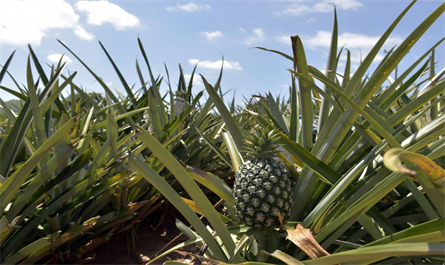The key steps of pineapple cultivation include soil selection, sowing, management and pest control

Soil selection
Pineapples prefer acidic soil with a pH value between 5.5-6.5. The soil should be well-drained and rich in organic matter and trace elements such as phosphorus and potassium. The soil should be plowed to a depth of about 30 cm for better seed growth.
Sowing
Pineapples are generally sown in spring, from March to April. Seed treatment includes soaking in warm water and treating with carbendazim solution to prevent and control pests and diseases. After sowing, the soil needs to be kept moist to facilitate seed germination.
Management
Pineapples need sufficient nutrients and water during their growth. Regular weeding, fertilization and pest control are important parts of management. Fertilization is mainly based on nitrogen, phosphorus and potassium compound fertilizers, which are applied once a month. Pest control includes the use of fungicides and insecticides.
Pest control
Common diseases include anthracnose and leaf spot, and insect pests include aphids and spider mites. Prevention and control methods include spraying fungicides and insecticides, and strengthening plant management to improve resistance.
Growth cycle and yield of pineapple
Pineapple trees generally take 3-4 years to bear fruit, and can be harvested all year round. Pineapple has a high planting density, high survival rate and fruiting rate, and can produce up to 20,000 catties per mu. Pineapple has low planting costs and high yields, which makes its market price relatively cheap.
Through reasonable soil selection, scientific sowing and management measures, the yield and quality of pineapples can be effectively improved to meet market demand.
Plant growh regulator use on pineapple
3-CPA(fruitone CPA) or Pinsoa Pineapple king, it's can increase fruit weight,make pineapple taste better and increase production.
RECENT POSTS
Featured News



